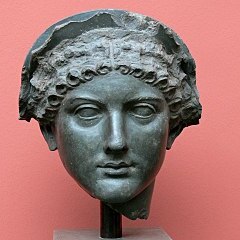Heute wurde das #Ghostbike für #Natenom aufgestellt.
Vor 10 Tagen waren (laut @ghostbikebot) in #OpenStreetMap schon 770 Ghostbikes markiert.
Über https://mapcomplete.org/ghostbikes lassen sich die #Ghostbikes relativ einfach einpflegen, auch ohne #OSM-Kenntnisse.
#StopKillingCyclists #VisionZero
#mapcomplete #Verkehrswende


@StephanMatthiesen @mastobikes @fedibikes_de
That is because the map of ghost bikes is based on OpenStreetMap, which has as basic rule that “only verifiable information at the location of the object” should be added. For example, the inscription can be checked by someone passing by.
This rule is stretched a bit in practice (e.g. a link to a news article isn’t really verifiable, neither is the date of installation).
@StephanMatthiesen @mastobikes @fedibikes_de
This also means that certain types of data are not suited to be stored in OpenStreetMap, mostly temporal data. For example, traffic counts at a certain moment, temperatures, air quality … cannot be adequately saved into OSM (but there are other projects for this). That is because this cannot be maintained by volunteers. When I walk somewhere, I cannot verify that it was X degrees there yesterday and that Y cars passed there.
@StephanMatthiesen @mastobikes @fedibikes_de
Similarly, we don’t save statistics about traffic incidents. We cannot verify that something happened somewhere by just passing by, neither can we verify that we mapped _all_ accidents.
Which brings us back to why the date of the accident is not asked: because we cannot independently verify this - especially if there is no news article about this. However, this is definitively in the gray area of data we _might_ collect.
@StephanMatthiesen @mastobikes @fedibikes_de
At last, another question to ask is what we are supposed to collect where.
The map of ghost bikes is about where one can find ghost bikes. It is not a map where and when a traffic incident happened - even though all ghost bikes are related to a fatal traffic incident.
But the date of the incident is not directly related to the ghost bike. The ghost bike might be placed weeks, months or in some cases even years after the incident.
@StephanMatthiesen @mastobikes @fedibikes_de Similarly, the bike might be placed at a different location then the incident. Should we also save that information? Should we save information about what other vehicles were involved in the incident? Should we register the weather conditions? The speed and direction all vehicles were going to? The names of the emergency responders?
Why is the date of the incident something we value so much in this context?
@StephanMatthiesen @mastobikes @fedibikes_de
Collecting the data about the above answers might be useful for some people involved - people grieving the loss, people trying to understand what happened or by activists or city planners who want to improve the situation.
However, OpenStreetMap is _not_ the right place to collect this data in. It is the right place to collect information about the physical object - the ghost bike, but it is not the right place for all this other information.
@StephanMatthiesen @mastobikes @fedibikes_de
For the other information, I’d like to point to Wikidata/Wikipedia, which is a better fit for this.
(For those unfamiliar with Wikidata: it is a database where one can enter statements about pretty much everything)
As such, one could make a Wikidata-entry (with linked Wikipedia article) about the person who was killed in the crash - and link to this from the ghost bike.
Similarly, one could make a wikidata entry about the accident and link it.
@StephanMatthiesen @mastobikes @fedibikes_de
(This technique is also used to link a street to the person/object/… that the street is named after, as visible in https://mapcomplete.org/etymology )
This way, one could write and see a nice article and relevant pictures about the person who was killed directly from the map or add all relevant details to a wikidata entry about the fatal crash.